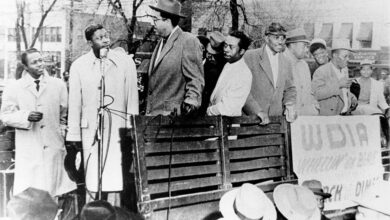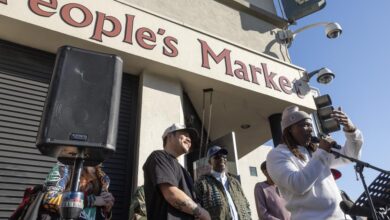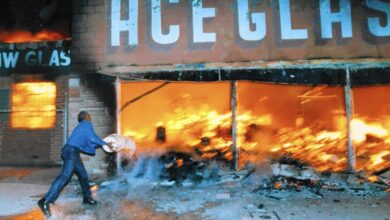Louisiana unemployment demographics show younger Black women most likely to remain out of work | Business

Black people in Louisiana account for nearly one-third of the state’s population but represent nearly 60% of people who were still out of work in October, the latest U.S. Department of Labor demographics data shows.
The share of Black workers unemployed during the coronavirus pandemic reached similar heights during the Great Recession in October 2008 and is up from a still-high 55% one year ago, according to historical data.
The ranks of people still unemployed seven months into the pandemic in Louisiana also were disproportionately skewed to most likely be Black women between 25 and 34 years old, the data shows.
There were more than 70,800 Black residents unemployed compared with 39,900 White residents, about 1,300 Asian residents, 669 American Indian or Alaskan Native and 126 Native Hawaiian or other Pacific Islanders unemployed. Not all of the unemployed shared race information; there were about 8,000 who did not answer the race question.
The national unemployment rate for Black people was 10.8% in October but was 6% for White people, according to the Bureau of Labor Statistics.
In March, sweeping restrictions to help curb the spread of the coronavirus in the state jumpstarted an economic ripple effect that resulted in business closures and layoffs.
At first, the unemployment rate of both White and Black residents increased similarly but then diverged.
“As we got beyond March and April, we started to see more typical patterns such as Black unemployment not improving as quickly,” said Valerie Wilson, director of the Program on Race, Ethnicity and the Economy at the Economic Policy Institute. “What we’re seeing as more time passes is that it’s also more of a reflection of different kinds of jobs that people hold. A lot of the big impacts have been in the service sector, which disproportionally employ women and people of color.”
That also means getting those workers back into the labor force is twice as difficult, and it’s not just about access to education or more skills.
“It’s tough right now. Until we get the unemployment rate down, workers are going to be displaced, and it’s going to be difficult to address those inequities,” Wilson said. “No amount of training or reskilling is going to create a job. The first step is to grow the labor market.”
Women are also more likely to remain unemployed. As of October, only 46% of people out of the labor force statewide were men — a gender gap that’s grown slightly wider. The dataset did not include information about whether the women who remained unemployed have children at home. However, the Dallas Federal Reserve found that there was a 6.4% drop in the labor participation rate among Black women with children under the age of 13 between February and September compared with 2.4% decline among White women during the same time frame.
“For many families who have been juggling virtual or hybrid school, exposure-related quarantines or helping care for family members, more often women may step into that family caregiver role making that much harder to find a new job,” said Stephen Barnes, an economist at the University of Louisiana at Lafayette. “Unfortunately, this is a pattern we have seen in past recessions that also suggests a longer path to recovery for those groups as well as harder work ahead to ensure we are expanding access for minorities and women to high quality jobs with greater job security.”
The share of workers younger than 22 years old out of work increased to 7.3%, compared with 1.4% as of October 2019. That’s worse than during the Great Recession in 2008 when 2.8% of those under 22 years old were out of work.
About 7.3% of residents between the ages of 22 and 24 were jobless in October, up from 2.8% one year before and even during the 2008 recession when it was 5.2% of individuals for that age group.
The largest age group of unemployed residents are those between 25 and 34 years old, which accounted for 23.6%, up from 17.2% one year ago and 20.4% during the last major recession.
Residents between the ages 35 and 44 years old were less likely than that group to be unemployed — at 17.1%, which mirrors the last recession but is down from 19.6% last year.
Likewise, the percentage of those between 45 and 54 unemployed dropped to 11%. That’s better than during the Great Recession when that age group accounted for 17.4% of those unemployed, roughly the same as one year ago.
Only 4.8% of those between 55 and 59 years old were unemployed, better than the 5.3% during the last recession and an improvement from last year when 9% of those individuals were without a job.
Likewise, only 3.5% of residents between 60 and 64 years old were out of work, which is similar to how many were out of the labor market during the last recession but an improvement from 6.6% last year. About 3.2% of people older than 65 were out of a job, worse than during the most recent recession when 1.9% were unemployed but better than last year when 5% of those individuals were unemployed.
The employment rate for low-wage workers was down 18.9% in Louisiana compared to January, which is an improvement compared to more than 30% down in May, according to data collected by Opportunity Insights.
Retail trade along with accommodation and food services accounted for 30% of those unemployed compared to 14% during the last recession in 2008 and double the rate from a year ago, according to U.S. Department of Labor data.
“The coronavirus pandemic did not create the racial disparities but it did expose them,” said Jan Moller, director of the Louisiana Budget Project. “It’s the people on the front lines who have been hurt the most. Jobs that traditionally pay low wages are very vulnerable to economic contractions like the ones we’ve seen.”
























































